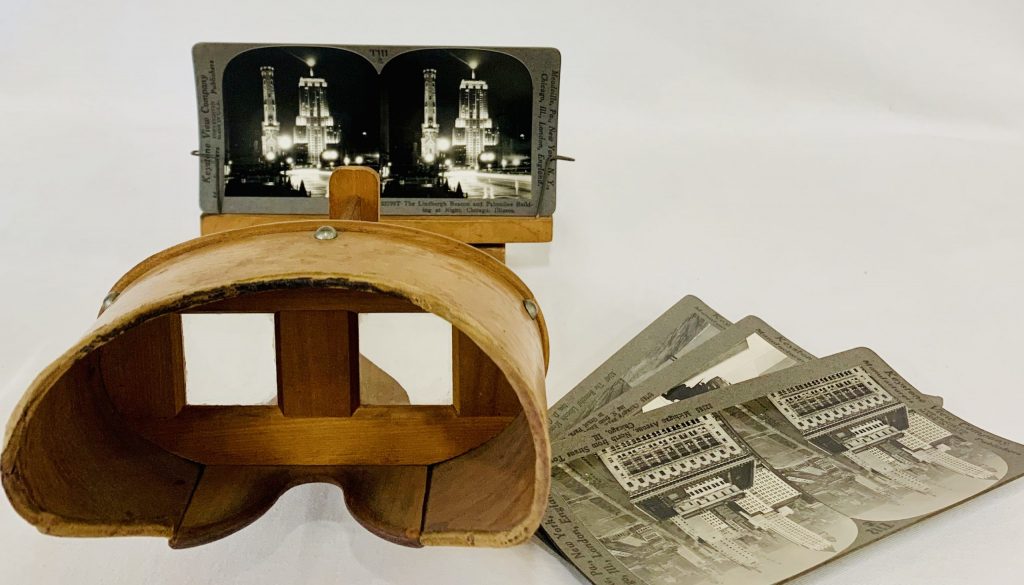Stereoscope and Stereograph

Stereoscope and Stereograph
1987.10.1
“The specific appeal of stereography lay in the illusion of reality created, because stereographs mimicked depth, solidity, and perspective, as if one were looking at a scene through a window.” (Babbitts, Judith 2004)
“The Perfecscope”, patented in USA, 1895, manufactured by Underwood and Underwood is a stereoscope , an optical instrument, consisting of two prismatic lenses and a wooden holder for the stereograph card. A Stereograph is comprised of two identical photographs, pasted on a backboard, which are offset from each other, one slightly to the right and another to the left. When viewed using the stereoscope, the human eye combines these two photographs which are seen from slightly different angles of the left and right eye, transmitting these to the brain, merging them into one, producing a three-dimensional image. This visual knowledge was brought into day-to-day lives by two major companies, Underwood and Underwood and Keystone company. Stereographs were used in the field of education, entertainment, sales etc. between mid 19th century to early 20th century.
This Stereoscope was gifted by Barbara Barrett to Kenilworth Historical Society in 1987. The Stereographs feature scenes of Chicago’s architecture and Memorial Day celebrations with Kenilworth’s Girl Scouts, circa 1930s/40s.
